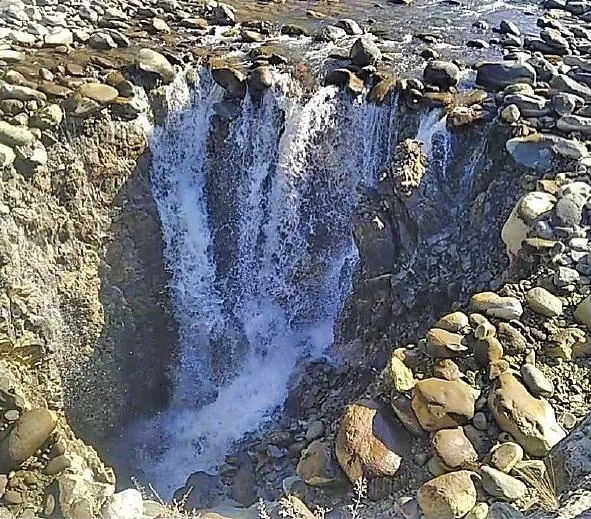Anantnag: The efforts to divert the water from a sinkhole in a Brengi stream, one of the major tributaries of River Jehlum in south Kashmir’s Anantnag district is on.
The vertical hole that developed in the stream near Wandevalgam village of Kokernag has disrupted the flow of water.
“We have pressed men and machinery into service to divert the water from sinkhole so as to ensure it flows downstream,” said Muhammad Saeed, Assistant Executive Engineer, Flood Control Department Kokernag.
He said that by Sunday evening, the channel would be ready. Deputy Commissioner Anantnag Piyush Singla has already formed an expert committee to study the occurrence in detail and submit a report within two days.
“We would take a decision on treating this sinkhole once the expert committee submits its report,” he said. Singla said that they were yet to find the outlet of this underground water channel.
Earlier, he tweeted, “Sinkholes indicate KARST topography typical of our areas. No need to panic. Experts from the University of Kashmir (KU) and the Department of Geology roped in for scientific understanding.”
Experts believe it to be a natural phenomenon formed due to the gradual chemical dissolution of limestone rocks in the river.
However, they have suggested geophysical and gravity surveys to ascertain the path of the cavity-underground river system and to prevent any disaster.
Prof Ghulam Jeelani, Head of the Department of Earth Sciences, KU and Prof Muhamad Sultan of the Department of Geography, KU were part of the expert team who visited the spot.
“This is a highly karstified area of the western Himalayas with and is vulnerable to surface exposure of such sinkholes,” Prof Jeelani told Greater Kashmir.
He said that to avert life and property loss, proper mapping of underground conduit networks in the region was a must.
“If we are not able to find the outlet of these channels or there is a blockage, it can lead to a sudden burst of water causing localised floods,” Prof Jeelani said.
He said that besides the water quality monitoring it was a must as such areas are highly vulnerable to contamination due to anthropogenic input.






